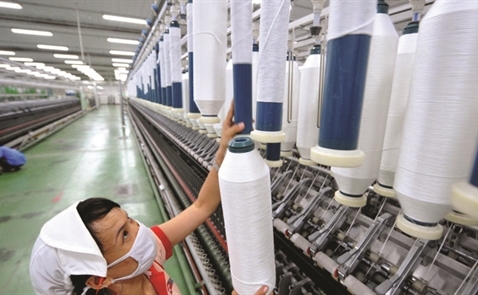While foreign investors flock to Vietnam, many textile projects developed by Vietnamese investors have failed, raising concerns about the future of Vietnam’s textile & garment industry.

Vu Dinh Duy, general director of PVTex, a large polyester plant which is incurring a loss of trillions of dong, has been absent from his post for many years and out of contact.
The plant, which started operations in 2008, was expected to help reduce the country's reliance on imports of the same kind of fibre by 30 percent. An investigation of huge losses is to be undertaken.
PVTex and enterprises like PVTex could hinder the development of Vietnam’s textile & garment industry.
Although it has been open for a short time, the bonded warehouse of Huntsman Textile Effects belonging to US-based Huntsman, which specializes in providing dyes and chemicals for the textile & garment industry, has been working at full capacity. The demand for products from newly invested fiber plants in Vietnam is very high.
Many fiber plants developed by investors from Japan, South Korea, China and India have been set up in anticipation of the Trans Pacific Partnership Agreement (TPP).
The Japanese fabric manufacturer Shikibo plans to cut the production volume at its plant in China and increase output in Vietnam. The Osaka branch of Kuraray synthetic fiber has invested $2.51 million to install the production line that makes sportswear in Da Nang City. In 2014, Itochu set up a factory in Vietnam which can churn out 500,000 meters of fabric a month.
A report shows that foreign direct investment (FDI) in the textile & garment sector had reached a record high of $2 billion by the end of 2015.
Meanwhile, Vinatex is the only Vietnamese corporation which makes heavy investment in fiber manufacturing, dyeing and textile projects with an aim to ease reliance on material imports.
PVTex, a project co-developed by Vinatex and PetroVietnam, is one of them. Designed to make 500,000 tons of fiber a day, it is hoped to provide polyester at a low price which will replace imports worth $1.6 billion a year.
PVTex only became operational in 2012, two years later than initially planned. Meanwhile, after two years of operation, it incurred a loss of VND1.472 trillion.
Vinatex then decided to divest from PVTex in 2014. In early 2015, the plant halted its operation. Later, it resumed operation but continued incurring a loss of VND3.34 million per ton of products.
PVTex has found two partners showing interest in the project – Indian Indorama Group and Singaporean Fortrec Chemicals. However, no final decision has been made.
Thanh Mai
Source: English.vietnamnet.vn






